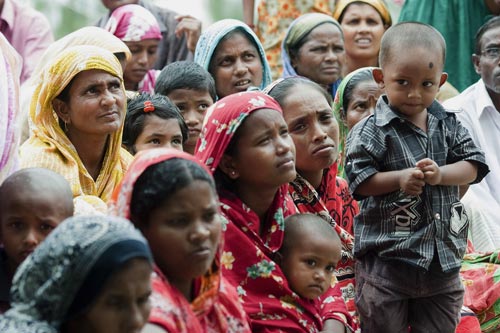CIMMYT Gender Specialist Lone Badstue attended a CGIAR Gender Network meeting in the Philippines during 19-23 January. Participants discussed CGIAR’s progress and results in gender research, along with plans for collective, cross-program activities that contribute to CGIAR innovation.
Q: How do you think we can inspire project leaders, farmers, scientists, and others to view gender as an integral part of CGIAR projects?
A: When you want to introduce something different and new, you’re going to have varying levels of acceptance and pushback. Integrating gender is a change process, and it isn’t something that happens fast.
Ultimately we want to help as many people as we can, everyone agrees on that. We should bring forward our gender agenda as something that will help us reach that common goal, with the end benefit being worth the change and investment. This is why evidence is so important – if there’s anything researchers and scientists respect it’s evidence, and that is why gender researchers from 12 different CGIAR Research Programs (CRP) have embarked on a global study of gender norms to increase the development impact of research programs.
Q: Speaking of the CGIAR Global Study on Gender, could you discuss the goals and outcomes?
A: This study will provide real life examples of processes on the ground.
The information will really help CGIAR Research Programs to hone their impact pathways — models of how projects see themselves achieving impact — because right now those pathways involve many theoretical assumptions. We want to show the value of qualitative research and how this complements quantitative research and reveals processes that the latter can’t. We’ll also learn how these processes matter in diverse locations and circumstances worldwide.
Q: The characteristics of a proposal where gender is mainstreamed were also discussed to see how they can make an integral part of project rsearch and activities. What would a gender-mainstreamed research proposal look like?
A: A gender mainstreamed, or gender responsive research proposal, reflects explicitly on the characteristics of its target beneficiaries and addresses their concerns and experiences as an integral dimension in the research design. This means knowing the context and ensuring that research outputs address the needs of the different groups you want to serve. To help scientists and research teams think about how to begin to address these issues when designing a new proposal, the CIMMYT gender unit has developed a brief guidebook.
Q: What are some overall conclusions that came out of the CGIAR Gender Network meeting?
A: We have a moment of opportunity. The meeting allowed us to share our experiences, identify key tools to promote gender mainstreaming (gender mainstreaming is a globally accepted approach to achieving gender equality) in CRP research and establish a collective vision of our gender research. We need to leverage this momentum and focus on the goal of establishing a solid evidence-base for gender research, thus integrating a gender-framework in all CGAR projects where it is relevant.

 Gender equality, youth and social inclusion
Gender equality, youth and social inclusion